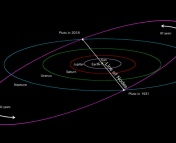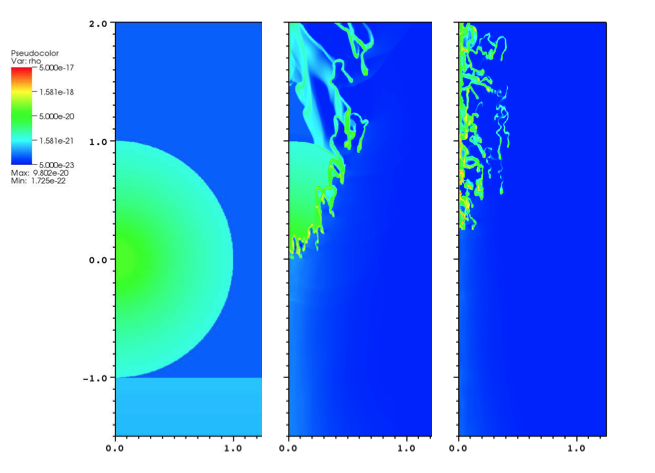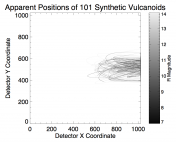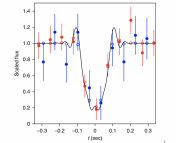Title: Early Solar System instability triggered by dispersal of the gaseous disk
Authors: Beibei Liu, Sean N. Raymond, Seth A. Jacobson
First Author’s Institution: Zhejiang Institute of Modern Physics, Zhejiang University, Hangzhou, China
Status: Published in Nature [closed access]
Despite all the debate on how the Solar System formed, there are two ideas that astronomers generally agree on: (1) there was a period of planetary instability at some point in our history, which knocked planets out of their original circular orbits and caused them to migrate and gain eccentricity, and (2) a gas disk was present during the early solar system and it later dissipated due to radiation from the Sun. Today’s authors are the first to propose that those two facts are directly connected, and that it was the process of dissipating the gas disk that mixed up the orbits of the giant planets.
In the Solar System, evidence for instability is specifically found in the orbits of the outer planets (Jupiter, Saturn, Uranus, Neptune). In general, planets are expected to form on flat, circular orbits, so the non-zero eccentricities and inclinations of the outer planets indicate that something disturbed them after they formed. The prevailing explanation for the disturbance is that the giant planets left their original positions at some point in history and migrated to their current locations (see the Nice model!), but astronomers have so far not been able to agree on the mechanism that sparks the migration.
Planets on the move
The inside-out gas dispersal mechanism proposed by today’s paper is named the ‘rebound’ model, and it depends on the idea that gas produces force on a planet. When a planet is surrounded by gas on both sides, the forces even out and the planet will stay put. However, if the gas is present on only one side of the planet’s orbit, the planet will feel a net force in that direction, and it can start to move. So as the gas disk dissipates, starting close to the sun and moving outwards, the gas giants will in turn each experience a one-sided torque and move outwards as well, until the dissipation is complete. Planets don’t like being too close together, so as each planet migrates outwards towards its companions, it will spark instabilities that excite the planets’ orbits.
Below, in Figure 1, we show the theoretical prediction (along with some current data), for the change in the giant planet orbits as the gas disk dissipates. Each color represents a planet, where the thick lines show the semi-major axis of the planet and the thin lines show the closest and furthest distances to the Sun. You’ll notice in this case, the authors included a fifth potential planet, which later gets scattered away. When the orbits are nearly circular (before ~0.5 Myr), you can see that planets stay at roughly the same distance from the Sun at all times. However, once the disk starts to dissipate, each planet gains eccentricity and starts to make more drastic movements. The points at the right side of the graph show the current orbit of each planet.
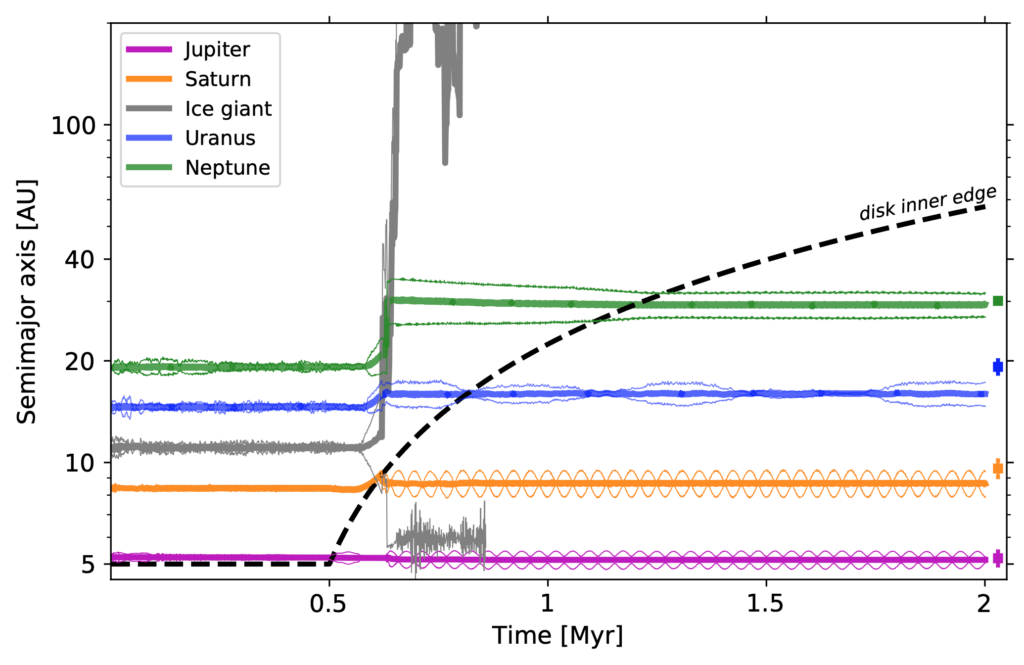
Figure 1: The evolution of the giant planet orbits as the gas disk slowly dissipates. As the edge of the disk approaches the planets, it pushes them closer together, creating instabilities! The extra planet shown in gray gets thrown out entirely by the gas disk. Image Credit: Figure 1 from today’s paper
For dispersal of the gas disk to be a likely driver of planet instabilities, the theory needs to work under a variety of conditions. To test this, the authors carried out their simulations with a range of configurations of giant planets, with and without smaller rocky bodies known as planetesimals, and with different rates for gas dispersal. Additionally, they ran every test twice – once by initiating gas loss close to the star and moving outwards, and once by enforcing gas loss at a consistent rate at all points in the disk. If the inside-to-outside progression of gas loss didn’t matter, the two scenarios should yield the same results.
Figure 2 shows all the final semimajor axes and eccentricities reached by the gas giants compared to their actual values (the stars). The authors find they are most able to most closely recreate the giant planet orbits when they include a planetesimal disk, and that having a fifth planet helps as well!
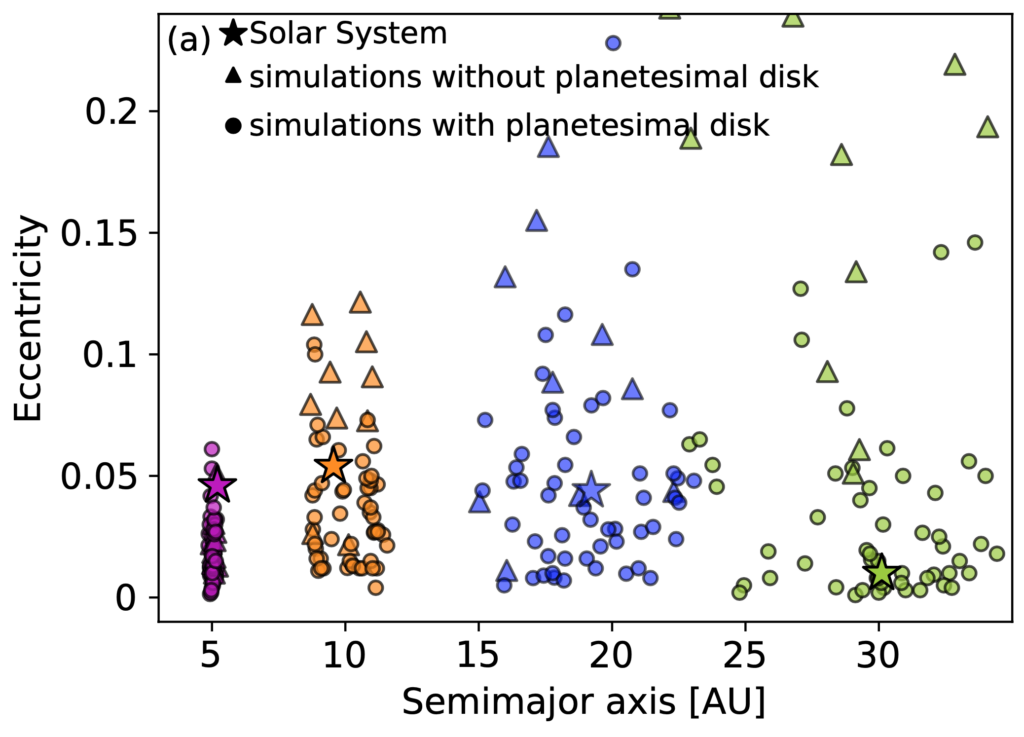
Figure 2: The final orbit eccentricity and semimajor axis of the simulated systems compared to the actual values for the giant planets (stars). The rebound model is able to recreate the orbits fairly well! Image Credit: Adapted from Figure 4 from today’s paper
Solving problems with rebound
One of the main issues with solar system formation paths is that they have all previously required a lot of fine-tuning in order to recreate the solar system, particularly in the placement of planets and debris belts. Since we believe that most, if not all, planets are born in gas disks, which have been observed to dissipate within a few million years, the rebound mechanism relies on a process of gas dissipation that is likely unavoidable in the vast majority of planetary systems. For this reason, the authors call their model a “nearly universal process affecting not just our Solar System but planetary systems across the Galaxy.”
Finally, one of the longstanding uncertainties in Solar System formation was when exactly planet instability should occur. Initially, it was believed that the instability needed to be delayed long enough to spark the Late Heavy Bombardment, theorized to be a period of time during which a ton of debris hit the Earth and Moon. However, more recent chemical evidence shows that there was no sudden spike in bombardment! Instead, new data suggests that the instability happens really early, within a few tens of millions of years after the formation of the Solar System. The rebound model fits nicely within this constraint, and the early perturbations to the inner solar system might be able to explain the orbits of the asteroids and masses of Earth and Mars to boot! Solving so many issues in planet formation with such a simple and universal theory is really rare, making the rebound model a very revolutionary way to think about the origins of our Solar System!
Astrobite edited by: Alice Curtin
Featured Image Credit: Isabella Trierweiler

